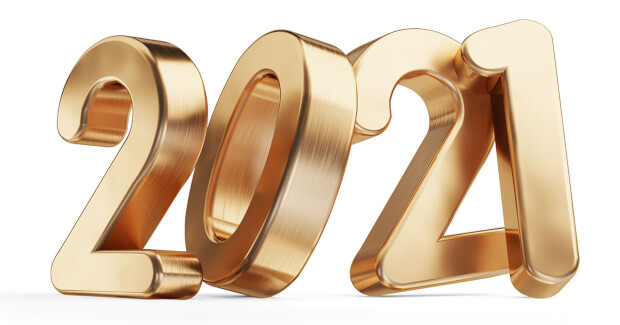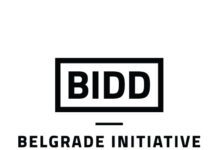The universe, as we now know, began with a bang. A big bang to be precise. A cataclysmic and cosmic explosion that at once gave birth to more than 120 billion galaxies. Digital diplomacy also began with a bang, or a momentous event that instigated a global change in the practice of diplomacy. This event, according to many scholars, was Sweden’s 2008 decision to launch a digital Embassy on the virtual world of Second Life. While it is true that the telegraph, fax and email all predate Sweden’s digital Embassy, and while all these technologies are digital, none of them ushered the current age of digital diplomacy.
In retrospect, Sweden’s digital Embassy foretold how this digital age would evolve. First, Sweden never intended for its digital Embassy to replace its physical posts. Rather, the Embassy on Second Life would be used to augment Sweden’s diplomatic efforts by creating the world’s first, global Embassy accessible to anyone with an internet connection. Second, Sweden’s Embassy used digital technologies towards obtaining public diplomacy goals, specifically showcasing its culture to digital publics. While digital technologies are now used by most MFA departments, it was in the realm of public diplomacy that digital technologies debuted, and to this day diplomats most eagerly use digital technologies to obtain public diplomacy goals. Third, Sweden’s Embassy was met with protest and condemnation as Second Life users sought to create a universe free of governments, borders and nation states. These new power dynamics between diplomats and digital publics still impact digital diplomacy today. At times, diplomats passionately vie over the attention of digital publics. Other times, diplomats regard digital publics as a problem that must be managed; a collective of gullible individuals who are easily strayed by false information, rumour and innuendo. Above all, Sweden’s Embassy was an experiment, an example of learning through trial and error. In all MFAs, digitalization has included a steep learning curve shaped by a willingness to experiment with digital technologies, and fail.
While 2008 may have witnessed the birth of digital diplomacy, 2021 may prove to be digital diplomacy’s greatest year. The global pandemic has proved that digital diplomacy is no mere fad; that placing diplomats in front of computers is not counter-productive; that digital activities do not amount to publishing memes and photos from world summits or that the digital and physical realms of diplomacy exist separately. On the contrary, the global pandemic proved that the digital and the physical complement one another and that diplomats are able to adapt, to master new technologies and to leverage these technologies in a myriad of ways. 2021 demonstrated that the world’s second oldest profession, once defined as a change resistant institution and a relic of the golden age of nation states, remains relevant and that this relevance is tied to digital technologies. This was nowhere more evident than in diplomats’ use of virtual tools to keep the wheels of diplomacy in motion amid lockdowns, quarantines and social isolation. UN committees, NATO briefings and even annual Ambassadors’ conferences all migrated to Zoom or Microsoft Teams. This migration was not entirely smooth. Cramped into small squares on a screen, diplomats needed to find new ways to exude confidence, to signal their counterparts, to read body language, to maintain protocol and to build trust. Yet after experiencing past waves of digitalization, diplomats proved adept at acclimating to new digital surroundings. As the ebb and flow of the pandemic continues, so will the reliance on virtual tools to augment face-to-face diplomacy.
In 2021, digital diplomatic capabilities also proved crucial to national pandemic policies. Digitally literate MFAs soon utilised a host of digital technologies in order to communicate with, and repatriate citizens from all over the world. Those MFAs that had invested in digital technologies, and established digital units, were also the most effective in repatriating citizens or aiding citizens stranded across the globe as national borders were closed. Equally important for diplomats was the ability to practice domestic digital diplomacy. For some time, diplomats have hoped to leverage digital technologies in order to cultivate a domestic constituency. Faced with narrowing budgets, and narrowing remits within governments, diplomats wished to reach their national citizenry and prove diplomats’ importance to the state. The pandemic offered such an opportunity with MFAs across the world documenting their consular efforts, as well as their contribution to managing the pandemic. From coordinating actions with allies, to securing protective gear for medical teams, diplomats used social media to exhibit their centrality to citizens’ lives. Through these actions, diplomats offered a potent reminder that even in the age of multinational corporations, tech giants and global governance institutions, diplomats are irreplaceable.
Notably, the practice of domestic digital diplomacy was traditionally hampered by the fact that diplomats are tasked with shaping the worldviews of foreign populations, and not domestic ones. It is for this reason that MFAs have been labelled as institutions that face the world with their back to the nation. The pandemic proved the inability to separate between the local and the global. Digitalization, by nature, blurs such distinctions and the emergence of domestic digital diplomacy indicates that diplomats may soon become important societal actors who shape the worldviews and beliefs of their citizens. While this will undoubtedly empower diplomats, it will also raise considerable ethical difficulties.
Covid19 also offered MFAs the opportunity to share their vast digital experience with other governmental bodies. The pandemic was accompanied by a host of disinformation campaigns, some orchestrated by states while others were managed by individuals. National governments were faced with the monumental challenge of balancing freedom of speech with access to accurate and reliable information, a challenge that diplomats have faced since 2014. In recent years, many MFAs have developed unique digital capabilities that aid them in monitoring online conversations, while mapping and countering disinformation campaigns. In some MFAs, there are even dedicated units charged with fighting disinformation, and creating digital alliances with other ministries, civil society organisations and NGOs. This digital expertise informed the strategies of several states, further enhancing the prominence of diplomats within national governments.
Lastly, the year of the pandemic was also the year of the Metaverse. 2021 was unique as Silicon Valley’s vision for the future was made public. In previous waves of digitalization, MFAs and diplomats lagged behind societies. Diplomats were late adopters of virtual worlds, social media and data analytics. Yet practice makes perfect. Or close to perfect. The announcement of the Metaverse has sent ripple effects through diplomatic networks. Diplomats wish to take part in laying the foundations of this borderless, digital world that will serve as a second layer of reality. The ramifications of the Metaverse are staggering- the merging of the physical and digital worlds will require changes in law enforcement, copyright laws, jurisdiction and the very notion of national borders. Some have suggested that diplomats will shape the Metaverse as they will be poached by Silicon Valley. Tech giants realise that the Metaverse will be born out of digital innovation and international accords. To this end, they will create their own MFAs manned by professional diplomats. Yet diplomats in different MFAs and International Organisations are already meeting to discuss the Metaverse, analyse its impact on international affairs and draft a roadmap for diplomats’ involvement in its creation. Now that there is a credible, digital vision for the future, diplomats can finally become early adopters of digital technologies.
For all these reasons, 2021 was digital diplomacy’s greatest year.







